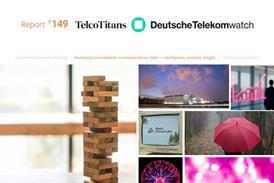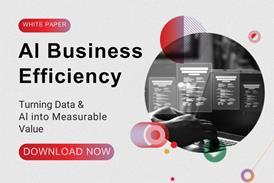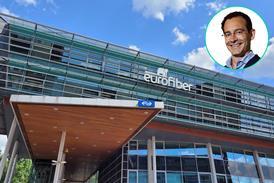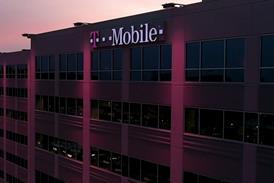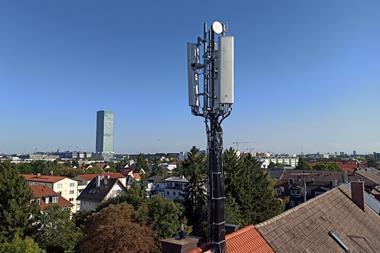- Blue Planet believes operators’ transformation ambitions are shackled by legacy network systems that create fear of unintended consequences for any change.
- It also guides that achieving the ultimate telco goal of ‘hyper‑automation’, and realising self‑healing networks, is not merely a technology revolution, but also demands process and culture renewal.
- The automation software innovator believes a next‑generation operations platform approach can eliminate this peril.
- For automation to become the operations norm, operators will have to rethink their mindset around software, prioritising systems that can evolve to support the ongoing innovation that will become an integral part of commercialising network capabilities.
- Citing successful outcomes at BT, Deutsche Telekom, Telefónica and Vodafone among others, Blue Planet asserts that adopting this automation strategy can bring telco operations closer to these revenue generating services, while also minimising the challenge posed by the digital skills gap.

A staple of classic Hollywood movies sees the hero facing a timebomb, a mess of wires attached to the ticking timer. Cutting the right wire saves the day, but breaking the wrong one heralds disaster…
While the stakes may not immediately feel quite as high, operators around the world face their own version of this dilemma every day just in trying to upgrade systems.
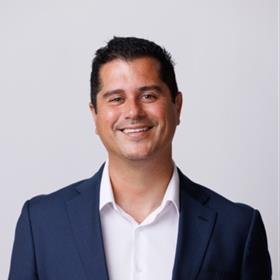
At a time when nimbler rivals from the digital and online worlds are innovating fast and staking claims in traditional telco territory, operators find themselves hamstrung when they move to embrace modern open digital architectures. Kailem Anderson, Blue Planet’s Vice‑President for Global Products & Delivery, describes this legacy technology backdrop as “spaghetti integrations”.
This tangle of often ancient interconnected and duplicated systems has created a network environment where teams are wary of making changes for fear of disastrous unintended consequences, despite the growing pressure to modernise and innovate.
“ No one’s sure that if you cut one of those links something essential won’t fail. The whole mantra for systems and operations becomes ‘if it ain’t broke, don’t touch it’, and then that stifles innovation in the customer environment because that legacy is holding them back. ”
Anderson.
Building an automated platform to escape ‘best of breed’ captivity
Compounding this mire, generations of customised technology implementation and a historically complex bespoke toolkit approach to operations means that operators are often reliant on suppliers to maintain and develop systems or even enable a new product launch, meaning too often their hands are tied.
Ironically, this peril has origins in adoption of ‘best of breed’ tools, according to Paul McCluskey, Blue Planet’s Marketing Vice‑President. While there was initially logic in taking this approach, it led to strategic problems when systems expanded into areas where the point products were ineffective or unsuitable.
“You end up filling the gaps, so systems just get bigger and bigger, and more complicated”, McCluskey notes, with the ultimate outcome being that with every change “a cash register rings for half a million dollars. This is something that the hyperscalers don’t have to deal with”.
Blue Planet believes that creation of fully automated networks is essential to escaping these existential threats to transformation, and to underpinning the adoption of the flexible systems required to open up new business models, revenue streams and productisation opportunities.
The vendor’s experience guides that this journey cannot realistically be completed in a single leap, however, and it encourages building on the foundations of a versatile platform that can be introduced in a targeted manner and steadily expanded, ensuring that risks can readily be defused.
Blue Planet has been on its own journey, first establishing its autonomy from parent Ciena as a software-based multi‑vendor service orchestrator. Through innovation and acquisition, it developed its suite of converged capabilities for automating the service lifecycle, envisioned for the anticipated telecoms network future that is now materialising.
It also draws on learnings from platform deployments with telco leaders in the digital transformation field, including European incumbents BT and Deutsche Telekom, US giants Comcast and Windstream, and innovative challengers such as DISH Network.
Automation demands process revolution — not just technology reinvention
For operators targeting fully automated networks, change is not just a technology matter, according to Anderson.
The scale of transformation — in bringing together IT, operations and network with a new set of processes and a new cultural mindset — also requires organisational reshaping that can only happen over time.
“ You can put the best technology in place, but, if you end up with the wrong organisational process to leverage it, automation will fail. Reaching hyper‑automation is three things: a technology transformation; a process transformation; and a people transformation. ”
Anderson.
Once embraced, a converged operations architecture can also be the answer to faster adoption of new services across discrete business units or in a geographically dispersed business, says Anderson, particularly as proven deployments become readily replicable. “Being able to accelerate and drive more velocity on new services via converged architecture is critically important”, he says.
Anderson notes that this quickened speed to market for services can already be seen in practice with Blue Planet’s deployment at BT in the UK. There, rethinking the approach to managing orchestration and provisioning has resulted in 90% of broadband solution elements being reuseable across both Consumer and Business division offerings, and with the development effort to build new services halved.
McCluskey concurs that a phased approach can bring widespread change at faster pace. “Start small, perhaps on an initiative that’s already funded, and make that a success and that provides an opportunity to scale up, or bring in another geography, or different part of the organisation”, he suggests, adding “that’s when things can snowball”.
“ It’s the advantage of the platform approach, with components that talk, and are pre‑integrated together on a common base. ”
McCluskey.
McCluskey cites the example of Telefónica in Latin America, where the operator is working with Blue Planet on rolling out new fibre‑based access use cases. The vendor is providing inventory, orchestration and services assurance as a converged system, and thereby supporting an up‑to‑two‑thirds reduction in time‑to‑market compared to situations where multiple applications would otherwise need to be integrated. Following early successes in Latin America, other Telefónica operating businesses globally are readying similar launches.
Keeping eyes on the ‘no ops’ prize for an automated future
In five‑to‑ten years’ time, visionary telcos expect to have a fully automated, ‘no ops’ environment, says Anderson.
This is backed up by the recent findings of TelcoTitans’ TelcoX survey of leadership within Europe’s tier‑1 telcos, which identified automation as the number-one investment priority for decision-makers, with 86% also predicting that automation will have a positive or highly positive impact on their businesses, particularly as AI comes to the fore. Embrace of automation is recognised as essential for moving beyond the constraints put on growth and profitability by current industry capex and opex demands.
Blue Planet has set out a core group of capabilities considered essential to delivering the automation needed to take telcos towards the “North Star” of self‑healing, self‑optimising, self‑organising autonomous networks.

“You need to be able to plan, orchestrate, assure and drive a closed loop”, Anderson says, “and to get there, you need to be able to deliver automation at massive scale, and you need a converged platform that is AI‑based”. This belief has informed Blue Planet’s philosophy as it developed its “next generation OSS” portfolio.
McCluskey adds that having a cloud-native platform that can evolve to keep up with technologies and services that are continuously being enhanced will help operators move faster, without having to discard or upgrade all technology that has gone before. This approach is quite different to traditional managed services in the operations sphere, where a thin layer of product is built and then heavily customised for an individual telco.
“ Telcos need to differentiate, but building out a customised, locked‑in operations system is not the way to do that. It’s expensive, difficult to remove, and, if anything, it slows that differentiation down. With a platform approach, introducing a new enterprise service doesn’t need a new vendor capability or application to support it, you’re just expanding what’s there. ”
McCluskey.
5G: a catalyst for platform jump
Anderson notes that the current driver for much of the transformation underway within operators is linked to the search for viable new business use cases that will unlock and monetise the capabilities of 5G networks.
Blue Planet, he says, invested heavily and ahead of the curve in this area and can now manage subscriber activation, and RAN automation, as well as network discovery and orchestration from core to RAN in a 5G environment.
“ Most of our deployments have a 5G flavour to them, and sometimes even start as 5G projects before expanding, because 5G is the catalyst for most of the network automation investment that is going on in the market right now. ”
Anderson.
Anderson cites the example of Telefónica Deutschland, where Blue Planet is supporting the transformation of the operator’s transport network into an automated software‑defined network providing a foundation suitable for data‑driven service development and the evolution of 5G.
Also in Germany, Deutsche Telekom and Blue Planet have undertaken proof of concepts on network slicing to ensure that end‑to‑end support systems can enable effective commercial delivery, addressing the rising demand among enterprise customers for dynamic services based on network slicing. “In Deutsche Telekom, we’re stitching together elements including RAN, transport and packet core to support delivery of an ultra‑low latency app at the network edge, in a way that is open and multi‑vendor”, Anderson explains.
Circumventing the skills gap, and making the most of operator IT
Anderson considers that the Blue Planet platform approach can also be an answer to a persistent question for major telcos — how to on-board the skills and capabilities of innovative software development within an operator environment. “Becoming a software development shop might be something a greenfield operator can consider, but for most operators that’s not the way forward”, he says. Indeed, incumbents that went down that path have largely ended up divesting as it was outside their core business.
McCluskey highlights that, with the implementation of the Blue Planet platform, operator IT can support internal clients more quickly and effectively. “Building the application is up to us as the product vendor”, says McCluskey, meaning that “operator IT can focus on connecting it and feeding it into the business and making it work for their internal customer rather than wrestling with core functionality”.
Implementation of a modern operations platform strategy is also supportive of telco ambitions to deliver new services for industry verticals that leverage their network strengths. These business cases are dependent on ensuring that service levels can be met, which depends on operational responsiveness.
“ Product managers know they have to fix any operational issues in order to take something to market for sectors such as financial services or retail, and this brings operations into the revenue‑generating stream. Business cases depend on them to create value. ”
McCluskey.
Above all, respect the software
As telcos evolve their operating model to move away from traditional operations systems, McCluskey notes that the relationship between the network and software also needs to evolve — with a change in outlook needed from operators and vendors alike.
Anderson reflects that the leadership of Blue Planet have prior industry experience delivering software as part of broader portfolios where hardware was the priority and code became something to be ‘given away’ as a negotiation tool.
Blue Planet, with its autonomy within Ciena, has been a different experience, says Anderson: “we sell independently to Ciena, we’re truly multi‑vendor and the software is never a giveaway”.
McCluskey adds that, when software is not prioritised, there is little incentive for the vendor providing it to invest in a way that ensures all the different components work together effectively and efficiently, and there is no central responsibility for ensuring that software combines across the individual products being sold. “We sell our software based on its value, not based on whether or not somebody could shift a bunch of optical gear next week”, McCluskey wryly comments.
Ciena’s arms-length backing is described as enabling a more forward‑looking approach to software development, based on long‑range expectations for market development. “We were fortunate to have Ciena rather than a venture capital company as parent because we were at the outset able to invest at levels they may have considered disproportionate to be able to make that happen”, McCluskey says.
“ We have invested in a lot of capability that’s under the hood. Not every dollar we spend is on a ‘feature’ and there’s been a significant investment in the underlying platform architecture and everything that goes with it. That’s unusual, but it comes from our core strengths of mixing software focus with network knowledge. ”
McCluskey.
This platform architecture, Anderson believes, can be the foundation for telcos to create a new outlook on software, with automation becoming the norm. And, as systems evolve to facilitate the commercialisation of key network assets and capabilities at accelerating speed, this can ensure the traps caused by “spaghetti integrations” can be evaded, with minimal drama.
Topics
- 5G
- AI/GenAI/ML (artificial intelligence, agentic, machine learning)
- Automation
- Blue Planet
- BSS/OSS
- BT Group
- Ciena
- Deutsche Telekom Group (DTAG)
- Digital transformation
- Europe
- Germany
- Industry Voice
- Network & Infrastructure
- RAN (radio access network)
- Strategy & Change
- TelcoX
- Telefónica Group
- Transformation (change)
- United Kingdom (UK)
- Vendor Voice
- Vodafone Group




